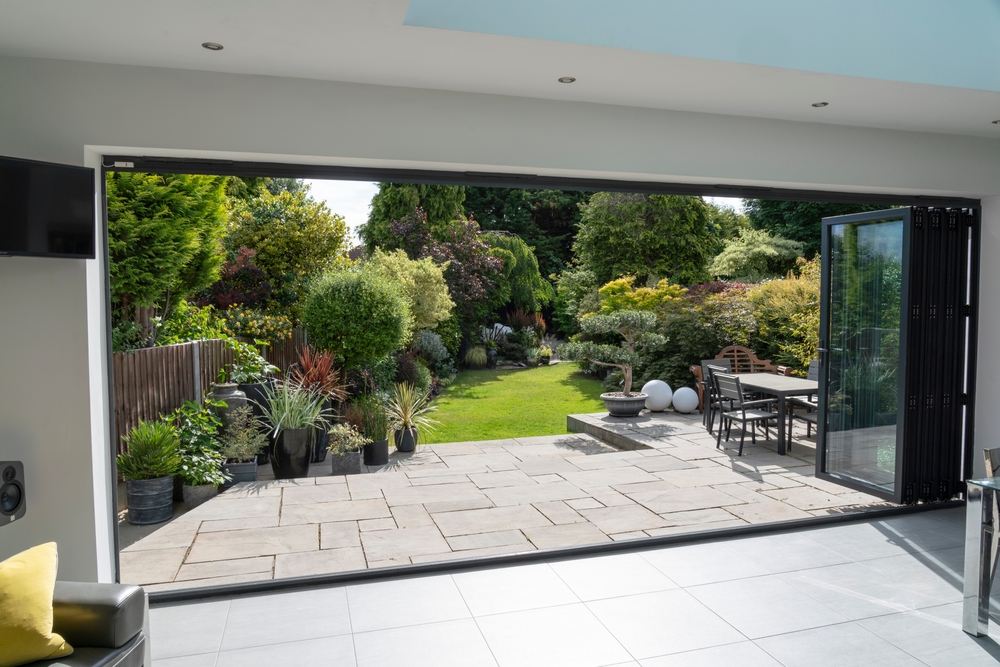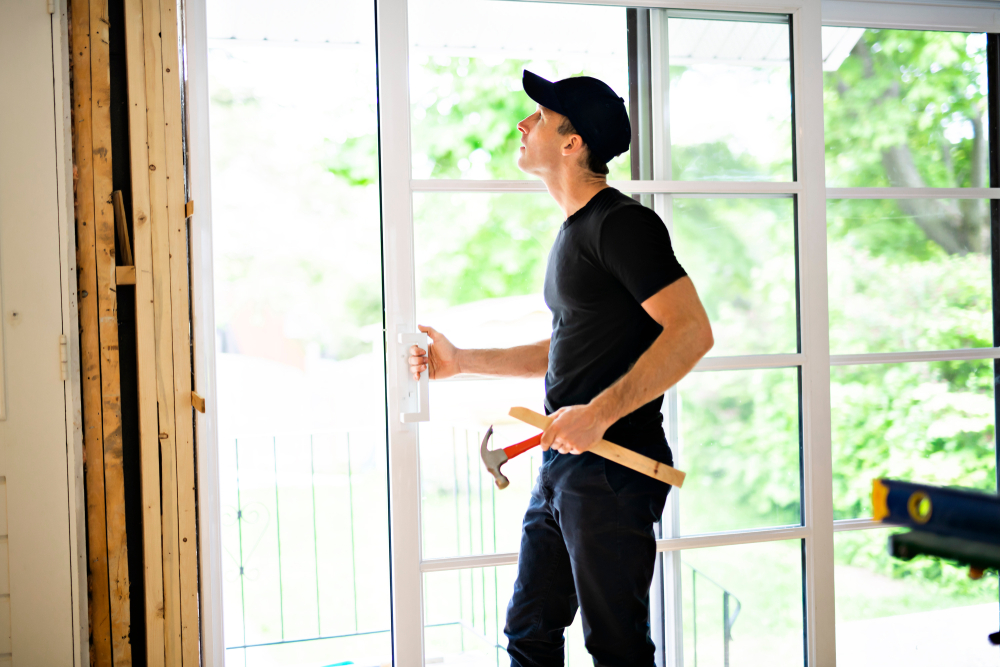When it comes to enhancing your living space and creating a seamless transition between indoors and outdoors, the choice between bifold or sliding doors is crucial. Both options offer unique features and advantages, so let’s dive deeper into what sets them apart and how they can elevate your home.

Fully Openable vs. Controlled Access
Bifold doors, with their concertina-style folding mechanism, excel at providing an expansive, fully openable space. They can effortlessly fold back, essentially opening up an entire wall to your patio and garden. This feature adds a touch of luxury, creating a breathtaking indoor-outdoor flow. In contrast, conventional sliding doors typically offer limited opening options, usually sliding to the left or right, providing only around 65 percent of the available space. However, pocket doors, which slide into concealed pockets within walls, can be a solution to open up a larger area, but they come with the trade-off of reduced wall insulation.
Flexibility in Use
Sliding doors offer greater control over ventilation and access. You can open them partially for a gentle breeze, slide them a couple of feet to step outside, or fully open them to invite the outdoors in. Bifold doors can be equipped with a ‘traffic door’ or access leaf, a practical addition, especially if your bifold system is your primary access point to the garden. This single panel functions like a regular door, allowing you to go in and out without folding all the panels back, making it convenient for everyday use.
Aesthetics – Glass vs. Frame
Sliding doors boast larger expanses of glass and fewer panels, allowing ample natural light to flood your interior and brighten your living spaces. When closed, they offer unobstructed views of your garden or surroundings, making them an excellent choice for maximizing light and year-round views. On the other hand, bifold doors, while capable of creating wider openings when fully opened, tend to have more visible vertical frames, which can obstruct the view. The glass-to-frame ratio is typically higher in sliding doors.
Threshold Considerations
Sliding patio doors often have a raised frame that you need to step over when moving from indoors to outdoors. In contrast, bifold doors can be installed with a flush threshold, creating a seamless transition between your interior and your patio or garden. Some sliding doors do offer a ‘low threshold’ option, typically featuring a narrow aluminum strip around 12mm in height. However, the choice is more limited due to the sliding roller mechanism within the frame.
Cost and Energy Efficiency
The cost difference between sliding and bifold doors is generally negligible unless you’re dealing with very wide openings. In such cases, sliding doors with multiple large glass panes can become significantly more expensive. Energy-wise, sliding doors tend to be more thermally efficient because they have less frame compared to bifold doors. However, both types can be tailored to comply with energy efficiency standards, depending on your preferences and needs.
Choice and Ease of Use
Modern materials and innovative technology have made both bifold and sliding doors light and easy to use. They are available in various materials such as aluminum, wood, and UPVC. Aluminum bifolds are a popular choice due to their robust frames compared to UPVC. The choice between materials often comes down to personal preference and aesthetic considerations.

Maintenance and Durability
Consider the long-term maintenance and durability of your chosen door type. Sliding doors typically have fewer moving parts, which can mean less maintenance over time. However, they may require occasional track cleaning and lubrication. Bifold doors, with their multiple hinges and folding panels, might require more regular maintenance to ensure smooth operation. Choose a material and finish that suits your maintenance preferences and climate conditions.
Space Utilization
The space available in your home and how you intend to use it can impact your choice. Bifold doors require space for the panels to stack when fully opened, so ensure you have adequate clearance on one side. Sliding doors, on the other hand, don’t need additional space for stacking, making them suitable for areas with limited room to accommodate swinging panels.
Security Features
Consider the security features of your chosen doors. Sliding doors often have multi-point locking systems and sturdy frames that enhance security. Bifold doors should also have robust locking mechanisms to ensure the safety of your home. Consult with a security expert or door specialist to assess the security options available for your specific choice.
Noise and Insulation
Both door types can provide excellent noise and insulation properties when properly installed with quality materials. However, the actual insulation and noise reduction capabilities may vary depending on the brand, design, and materials used. If noise reduction and energy efficiency are priorities, discuss these aspects with your supplier to select the most suitable option.
Customization and Design Options
Both bifold and sliding doors offer a range of customization and design options. You can choose from various finishes, colors, and hardware to match your home’s aesthetics. Some manufacturers even offer bespoke solutions to fit unique architectural requirements. Explore these options to create a door system that complements your interior and exterior design.

Weather Resistance
Consider the climate in your region when selecting your doors. Ensure that your chosen doors have weather-resistant features to protect against rain, wind, and temperature fluctuations. Proper seals, threshold designs, and quality materials are essential for maintaining a comfortable and weatherproof interior.
In summary, the choice between bifold or sliding doors involves careful consideration of various factors, including maintenance, space utilization, security, noise insulation, customization, and weather resistance. Evaluate your specific needs and preferences in each of these areas to make an informed decision that will enhance the comfort, aesthetics, and functionality of your home. Remember that consulting with professionals in the field can provide valuable insights and guidance tailored to your unique circumstances.

